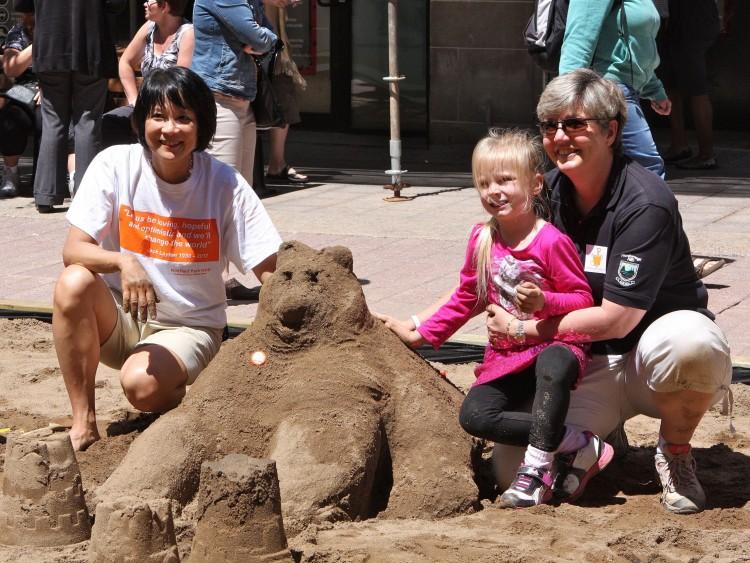OTTAWA—In high school, I presided over a debate where we invited candidates from the major federal parties contending in the 2004 elections. They were excited enough that those from the Outremont riding who were unavailable sent a neighbouring riding’s candidate to field questions from students and debate.
All the parties showed up, except the Liberals—they turned down our invitation.
After the event, students voted for the party of their choice so we could get a feel of our student body’s allegiances. If I recall correctly, the Liberals won, or at least got a large proportion of the vote.
It was an unsurprising result for private school students from Montreal’s affluent neighbourhoods, but I was upset that my classmates would persist in supporting a party that didn’t care enough, or so it seemed, to solicit our attention, despite our holding the event away from the media—and controversy.
Yet how could I blame my classmates? Putting the candidates’ performance at our debate aside, the newly reunited Conservatives hadn’t yet mustered the steam that was only able to bring them a majority government six years later in 2011. Opting for the Bloc Québécois meant that you wanted independence, and Montreal’s mainstream youth were not yet seriously considering the NDP a political force, a choice that only became en vogue in 2011.
Quite the opposite, the Liberals, despite the sponsorship scandal already making waves, had formed a stable government for 10 years, and the Quebec youth relied on it as the legitimate protector of Canadian unity against sovereign-Quebec political parties.
The Liberal Party was synonymous with security; it was the party that built Canada and kept it together. More practically, it was a symbol of competence.
There’s a famous picture taken after a cabinet meeting in the Pearson years that groups Pierre Trudeau, John Turner, Jean Chrétien, and Lester B. Pearson. The picture was on display at the Liberal Biennial Convention last weekend in Ottawa with an extra body photoshopped into the frame with a missing face to allow convention attendees to take a picture with famous Liberals.
Could more Canadian political stars ever fit into one picture frame?
Impressive Past a Hindrance?
One doesn’t need to go back to the 1960’s to recognize the party’s intellectual quality. It remained equally impressive to see strings of past Prime Ministers and party leaders seated one next to the other at the convention—all of whom have accomplished not only political careers but philanthropic, business, and academic careers as well.
But it seems like the Liberal Party’s glorious past and A-list roster create a mirage that still hinders it from making drastic changes or taking definite stands on issues.
It’s been five years now since there has been a Liberal government. In his opening speech at the convention, Interim Leader Bob Rae told his troops that, while they shouldn’t feel despair at their dismal results in the May 2 elections, they shouldn’t be complacent in thinking that power will simply return to them—which he calls, “leading with your chin.”
It is an encouraging sign that the party is ready to change, but it still falls short of smoke signals for a clear and marketable brand.
At the convention’s close, Rae lauded the structural changes that the party voted for, such as allowing non-members to vote in party leadership elections as the weekend’s best accomplishment.
Newly-elected party president Michael Crawley has a plan to revamp Liberal Party operations to improve its fundraising methods and its channelling of policy innovations from citizens up to the official party platform.
Having a modern and efficient political machine bodes well for the party’s prospects for a comeback in the polls and future electoral results; pounding repeatedly the party’s past accomplishments as well as the liberal values of diversity and freedom that it has always stood for helps to shape its identity.
But it’s only half the battle. A clear political platform needs to be developed in order to let Canadians know where the Liberal Party of Canada, should it reign again, will take the country.
Bob Rae presents his party as the only one that doesn’t tell its members what to do and how to think; the party is ready to be a listener and to be responsive to its party members and to the Canadian electorate’s wishes.
The party and Canadians “change,” he concedes, contrasting this approach to the “orthodoxy” of other federal parties. Perhaps this can be a centrist party’s luxury, but it might fit oddly with our current political climate that favours ready-made sound bites and the delivery of a consistent and simple message.
If the Liberals are going to reclaim power, they will need to do more than preach to the choir—they will need a song not already being sung with more conviction by their increasingly centrist opponents.

